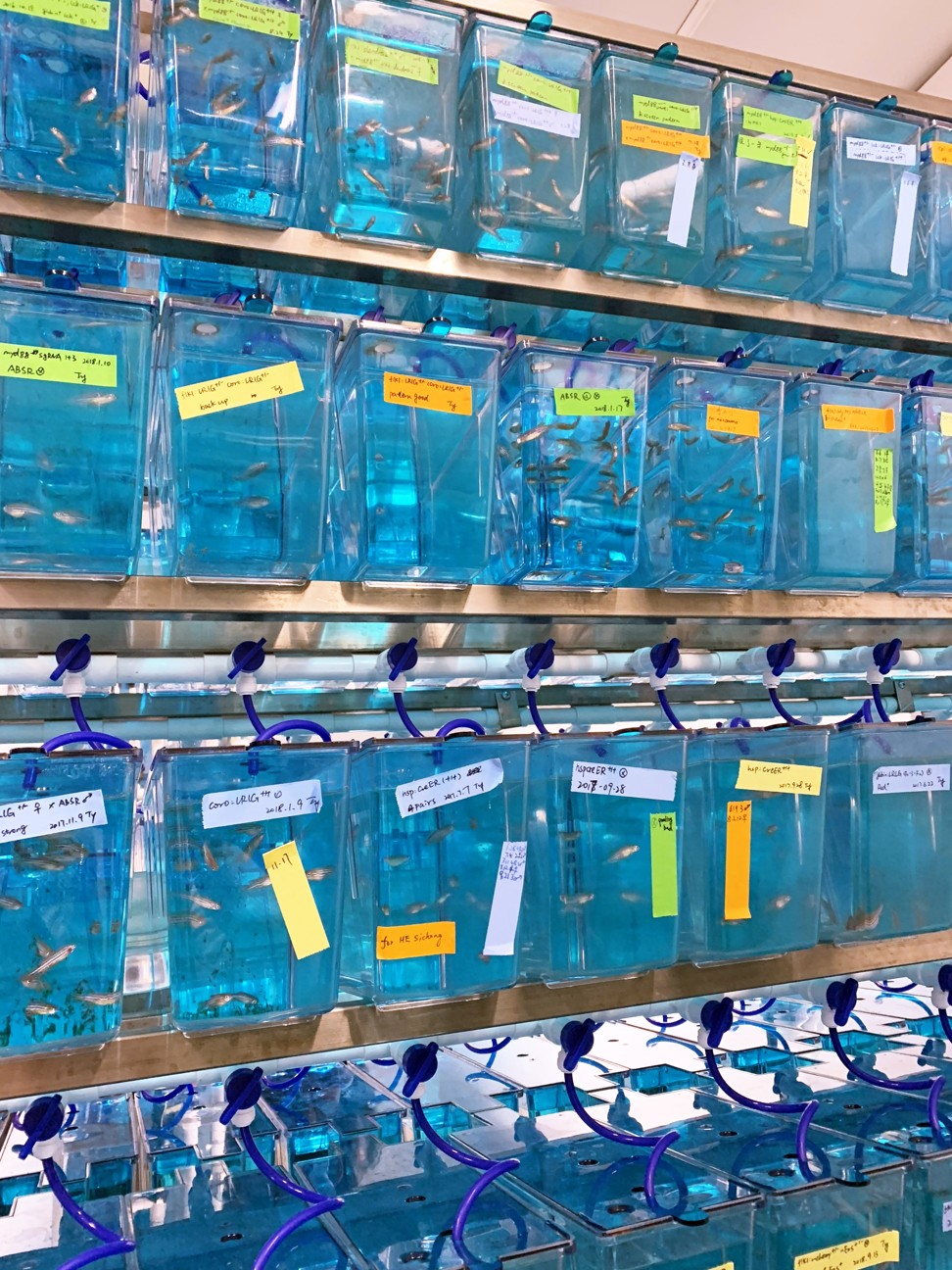
Fish kept at Hong Kong university could hold key to finding cure for dementia, say scientists who won prestigious innovation award
- Professor Wen Zilong and team from Hong Kong University of Science and Technology win Croucher Innovation Award
- Group has been studying zebrafish, which has a similar nervous system to humans
More than 30,000 transparent tropical fish kept in the water tanks of a university could be the key to Hong Kong scientists finding a cure for dementia.
Professor Wen Zilong, of Hong Kong University of Science and Technology (HKUST), said he has kept these genetically modified zebrafish at his laboratory because their nervous systems are similar to that of humans.
More reason to lower your blood pressure: it could prevent dementia
By studying how the brain develops in the fish, his team of scientists have discovered how a disruption in the development of some stem cells could led to neurodegenerative disorders, a group of illnesses that affects thousands of Hongkongers annually.
Wen and his students have recently received the Croucher Innovation Award for the breakthrough.
Mental health app may be lifesaver as Asia braces for dementia spike
But Wen said further study would be needed before a treatment could be developed for dementia, a disease which affects brain functions including memory, thinking, comprehension, learning and judgment, and eventually leads to death.
“There’s still a long way to go [before a cure could be developed],” said Wen, a researcher in the school’s department of life science.
“We will continue to look into the development and pathway of the receptors to see how we can regulate and monitor the evolution of the cells, and intercept accordingly to control different diseases of the brain.”
In Hong Kong, the prevalence rates of dementia among those aged over 65 is estimated to be between 5 per cent and 8 per cent, according to the Hospital Authority.

It is projected that there will be 2.3 million people aged 65 and above in the city by 2036. And, as Hong Kong’s population ages, it’s forecast that by 2050, dementia will afflict a third of the city’s elderly aged 80 or over.
Showing how the team put about 30 newborn zebrafish into a separate tank, Wen said the team began studying the fish’s transparent nervous system in 2016, by using a light-induced mapping technology.
Dementia risk higher if the air pollution where you live is bad
The group observed a relationship between a type of hematopoietic cell, called microglia cells, and the role the cells played in triggering dementia.
The microglia are the immune cells of the central nervous system, which goes to work in case of brain infections and inflammation, Wen said. They can help vacuum up damaged cells and bacterial infected cells.

The amount of microglia cells will then affect our vulnerability towards dementia, the team concluded.
HSBC deploys dementia specialist staff amid greying population
It’s believed the researchers’ findings could be developed into medications or therapy to delay the onset of diseases such as Alzheimer’s, and Parkinson’s, among the elderly.

